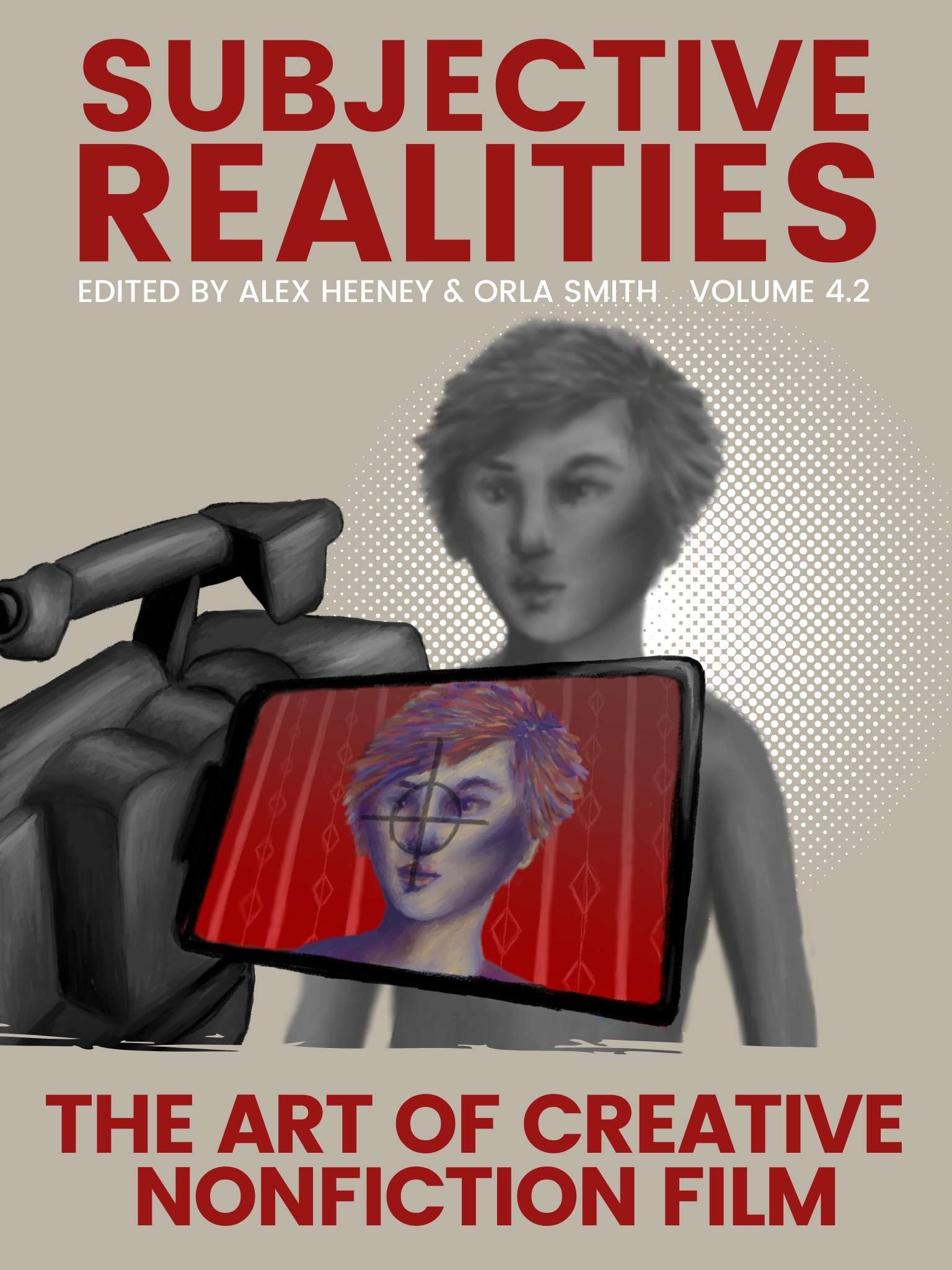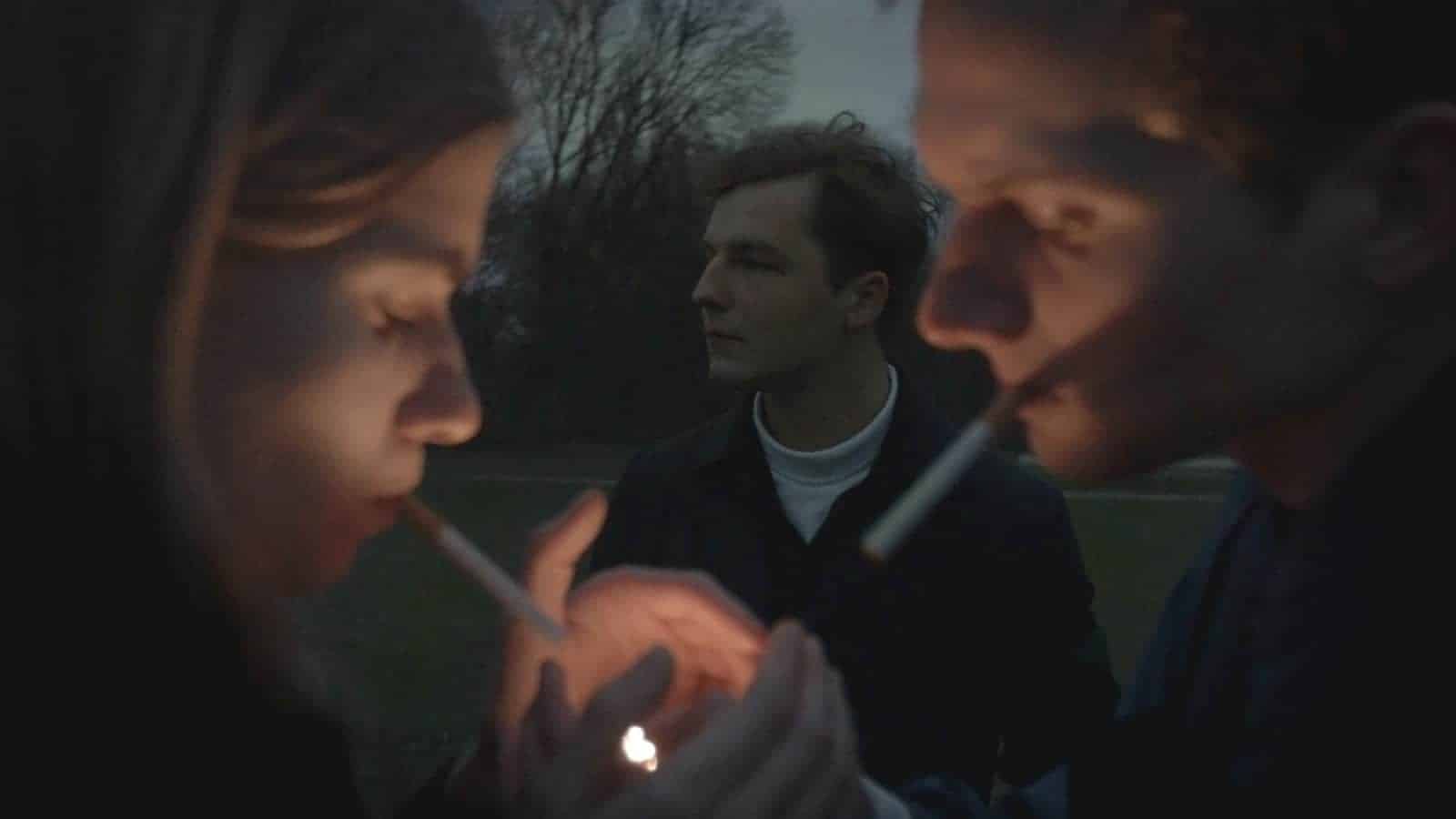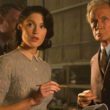Director Kasper Collin on creating a duet between Lee Morgan’s trumpet and his wife Helen Morgan’s voice in his new documentary I Called Him Morgan.

“Seven years ago, I saw a fantastic clip on YouTube with Lee Morgan playing with Art Blakey and the Jazz Messengers,” recalled Kasper Collin. “They were playing in a TV studio in Tokyo, Japan, in 1961. They were playing Bobby Timmons’ composition ‘Dat Dere’, and it was Lee Morgan’s solo. It was amazing. I’d never heard anyone play trumpet like that before. It really, really moved me. I found myself coming back to this clip for seven days and left it on repeat.”
[clickToTweet tweet=”‘I’d never heard anyone play trumpet like that before. It really, really moved me.’ – Kasper Collin” quote=”I’d never heard anyone play trumpet like that before. It really, really moved me. “]
Collin was no stranger to jazz: he had already spent seven years making his directorial debut, My Name Is Albert Ayler (2006), which chronicled the life of jazz saxophonist Albert Ayler. But he hadn’t connected with Morgan’s biggest hit, The Sidewinder. Like “most music-interested people,” he added, all he knew was that Morgan was “this wunderkind” jazz trumpeter whom Blue Note had signed as a teenager. “He made a lot of records. And then he was shot early by a woman and died young.” What he didn’t know was that the woman was Morgan’s wife, Helen, who was also responsible for his rehabilitation from his descent into drug addiction.
[wcm_nonmember][thrive_lead_lock id=’19429′]“I became very interested in his music and started to listen to a lot of stuff. I started thinking, ‘Is there maybe a film there?’” So I Called Him Morgan was born, “a love letter to Lee and Helen and the amazing music that brought them together.” When Collin started to speak to people who knew Lee, “Many of them started to talk about Lee’s last four years, that he had spent with a woman named Helen. And they started to talk about her in a very loving and passionate way — how nice she had been and about this relationship she and Lee had. I realized that this is actually the same woman that later on shot him. I didn’t know that.”
“That was almost like a Greek tragedy. When starting to talk and meet the people that knew them both — that night when Lee was shot, they lost two good friends. They didn’t just lose Lee. They lost Helen, also, that night. A lot of people hate her because she took their hero away. A lot of fans are still today very angry at her. I think she deserves to be known also for what she contributed and how she helped Lee, not just to be defined as the killer of Lee Morgan.”
[clickToTweet tweet=”‘It was very important to me not to have experts in the film trying to explain Lee Morgan’s music.'” quote=”It was very important to me not to have experts in the film trying to explain.”]
Because Collin came to the film from the music, “It was very important to me to leave space in the film so that people would have a chance to hear the power and the beauty of Lee Morgan’s music in there. Especially, if you see this film in a cinema, when the sound is cranked up, you have a chance to experience the music, as well as the unfolding of the story.” He hoped that “a film like this will help even more people to find this amazing music, Lee’s amazing artistry, and the music he represents.”
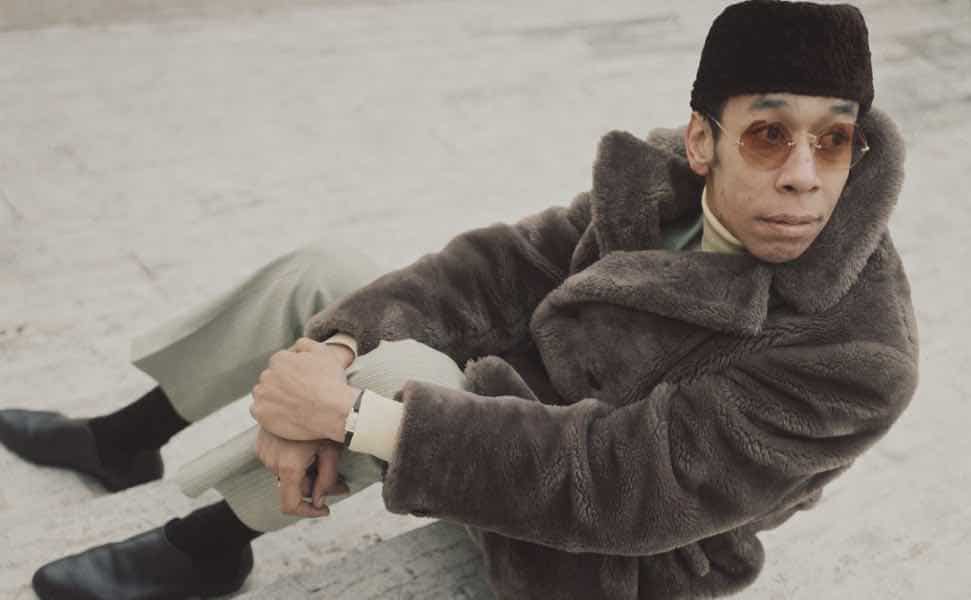
But “it was very important to me not to have experts in the film trying to explain” his music, Collin noted. To choose the music for the film, Collin began with what he called a “school boy’s approach with being correct — the landmark recordings” before finding a more personal way in. “The film today represents my own choice of music, the music that was speaking to me. There’s a progression in there, as well, of Lee as an artist. The decisions were made from the mood of the setting and the unfolding of the story.”
[clickToTweet tweet=”‘See this film in a cinema, when the sound is cranked up…to experience the music.’ – Collin” quote=”If you see this film in a cinema, when the sound is cranked up, you have a chance to experience the music.”]
“The first visual idea that I had for this was the snow storm that happened this last evening,” Collin explained. “We shot the first blizzards in New York. I was waiting for it. Because that last evening seemed to almost have a dream-like character when people were talking about it. The whole story navigated to this last evening when this very tragic thing happened. This snowfall, the blizzard was very important. We worked with old Bolex cameras [on 16mm] and pushed the film two stops for a grainy, moody feeling.”
To develop the film’s aesthetic and set the mood for the film, Collin collaborated with cinematographer Bradford Young. “We met because we both loved this music.” Young and Collin decided to film the interviews in “all entirely natural light settings, kind of relaxed settings. It was going towards something maybe a little darker than you’re used to. Trying to make it pretty simple but you want it to fit the film and show this person in a beautiful way.”
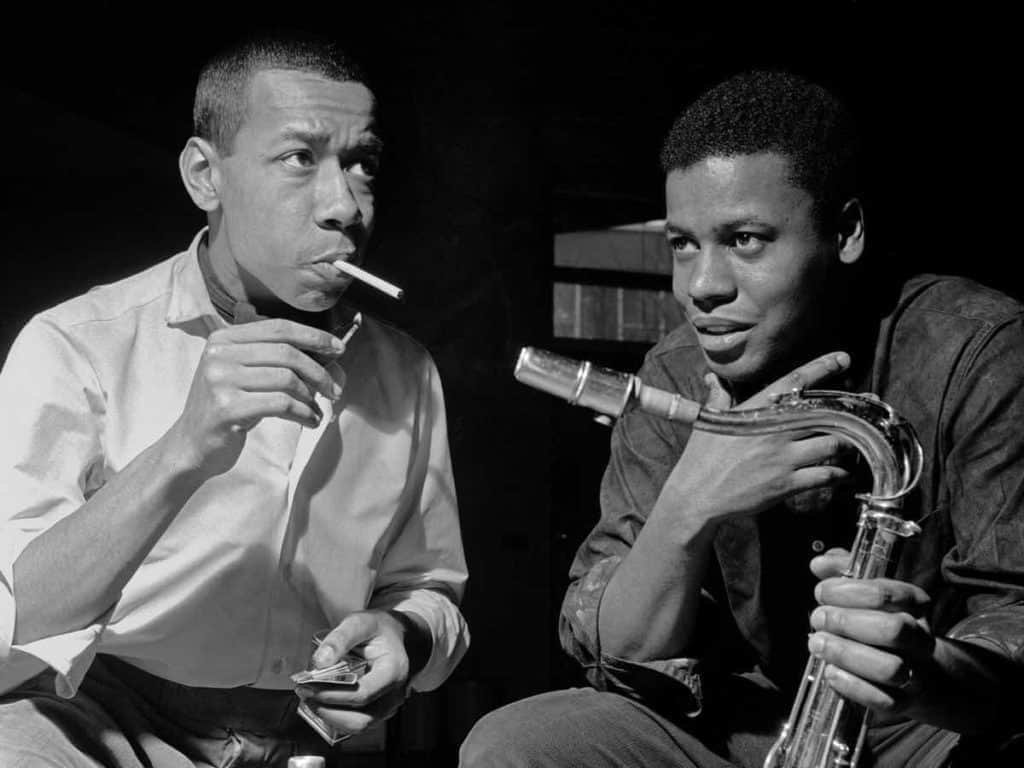
“Those interviews are so important. Those are long process interviews I made from three hours and up. The shortest was three hours, and it can be up to six or seven hours. A lot of the people in the film, they were easy to get in contact with because of my previous film. It was kind of popular among musicians, well-respected there. But then there were some people that were difficult. It took me almost four years to get Wayne Shorter to participate in an interview. We tried to make the film without him. We had to start editing the film, of course, while waiting for him. He added so much to the film. He talked about Lee as an artist on the same level as himself in a very unforced way. That was of great importance to this film.”
[clickToTweet tweet=”‘Wayne Shorter talked about Lee as an artist on the same level as himself in a very unforced way.'” quote=”Wayne Shorter talked about Lee as an artist on the same level as himself in a very unforced way.”]
Collins’ challenge was to stitch these interviews together with music, original recordings, and period images into a cohesive whole. “You sew part by part in the editing. It’s very much like you’re weaving. You’re adding layer, after layer, after layer of different materials. Those are all memory materials that I’m working with, from the newly shot interviews from people’s memories, the music and the voice recordings, and the old footage newly shot in New York that we added. Listening to these people talking about this today. Somebody described the film as a ‘hard bop Rashomon’. It was important to keep those contradictions in those people’s memories, that they’re not completely lined up. They tend to remember things in slightly different ways.”
[clickToTweet tweet=”I CALLED HIM MORGAN is a ‘hard bop Rashomon’. ” quote=”Somebody described the film as a ‘hard bop Rashomon’. “]
Most of Lee’s appearances in the film are either through recordings of old performances or photographs of him that Collin found in archives. “Lee Morgan must be one of the most photographed jazz musicians from this era. When I went to Mosaic Records archive, I was surprised when i found all those contact sheets with Lee from all those sessions. It was Frances Wolf, one of the founders of Blue Note, who photographed almost every session that was made with everyone I found from 1956 to 1967, 165 or 167 contact sheets.”
The photographs were extremely important for showing Morgan’s “progression as a musician and human being.” But what Collin liked most were “those small narratives that were in those contact sheets: the scenes between the musicians, the communion, the spiritual level, the joy and happiness in there.” Because “there’s not a lot of motion in the pictures,” one of the challenges for Collin was to create motion within the narrative. “In some of those sequences, the editing is very paced to the music, but it’s also an unfolding of something that’s happening.”

Helen, on the other hand, loathed having her picture taken. Collin’s best primary source for Helen was an interview conducted by Larry Thomas on cassette tape. He was a jazz fan and taught Helen night school. “The sound quality is rather bad, which is natural, being made in this little portable cassette tape recorder with no separate mike, just talking directly into this recorder. The distance from that machine and her mouth varies: she moves back and forth, and so on. Some people would say it sounds terrible, but I found that it sounds really beautiful.” We were talking about how much of that should be washed away, noise-reduced. I didn’t want that. You could do it, but she would sound very artificial if you do that.”
[clickToTweet tweet=”‘A duet between Lee and Helen Morgan, between her voice and his trumpet.'” quote=”You made a duet between Lee and Helen, between her voice and his trumpet.”]
Collin didn’t want to shoot reenactments, so he had to find another way to match images with Helen’s voice. “It was a challenge to get the visualization of Helen’s voice, her world — how to find a proper way to visualize her way in the story. That is an amazing story she’s telling, and it gives a specific perspective into this world, which I think was interesting and fresh,” he reflected. “It ended up with a merge of a feeling of old 8mm home movies style together with more of a poetic cinematic language.” Collin and Young mostly used new material, which they shot on 16mm, “but it’s also combined with an archive I hold of footage from New York and the rest of the US from the 1950s and the late 60s.”
“The sound of this recording, the way she’s telling this story, the sound of her voice, was something that struck me very early.” When the film screened at Telluride, Collin met “the great opera director Peter Sellers” who was in attendance and loved it. “He hugged me, and said, ‘You made a duet between Lee and Helen, between her voice and his trumpet.’”
Read more: Cristian Mungiu discusses the sound design in Graduation >>
[/thrive_lead_lock][/wcm_nonmember]
[wcm_restrict]“I became very interested in his music and started to listen to a lot of stuff. I started thinking, ‘Is there maybe a film there?’” So I Called Him Morgan was born, “a love letter to Lee and Helen and the amazing music that brought them together.” When Collin started to speak to people who knew Lee, “Many of them started to talk about Lee’s last four years, that he had spent with a woman named Helen. And they started to talk about her in a very loving and passionate way — how nice she had been and about this relationship she and Lee had. I realized that this is actually the same woman that later on shot him. I didn’t know that.”
“That was almost like a Greek tragedy. When starting to talk and meet the people that knew them both — that night when Lee was shot, they lost two good friends. They didn’t just lose Lee. They lost Helen, also, that night. A lot of people hate her because she took their hero away. A lot of fans are still today very angry at her. I think she deserves to be known also for what she contributed and how she helped Lee, not just to be defined as the killer of Lee Morgan.”
[clickToTweet tweet=”‘It was very important to me not to have experts in the film trying to explain Lee Morgan’s music.'” quote=”It was very important to me not to have experts in the film trying to explain.”]
Because Collin came to the film from the music, “It was very important to me to leave space in the film so that people would have a chance to hear the power and the beauty of Lee Morgan’s music in there. Especially, if you see this film in a cinema, when the sound is cranked up, you have a chance to experience the music, as well as the unfolding of the story.” He hoped that “a film like this will help even more people to find this amazing music, Lee’s amazing artistry, and the music he represents.”

But “it was very important to me not to have experts in the film trying to explain” his music, Collin noted. To choose the music for the film, Collin began with what he called a “school boy’s approach with being correct — the landmark recordings” before finding a more personal way in. “The film today represents my own choice of music, the music that was speaking to me. There’s a progression in there, as well, of Lee as an artist. The decisions were made from the mood of the setting and the unfolding of the story.”
[clickToTweet tweet=”‘See this film in a cinema, when the sound is cranked up…to experience the music.’ – Collin” quote=”If you see this film in a cinema, when the sound is cranked up, you have a chance to experience the music.”]
“The first visual idea that I had for this was the snow storm that happened this last evening,” Collin explained. “We shot the first blizzards in New York. I was waiting for it. Because that last evening seemed to almost have a dream-like character when people were talking about it. The whole story navigated to this last evening when this very tragic thing happened. This snowfall, the blizzard was very important. We worked with old Bolex cameras [on 16mm] and pushed the film two stops for a grainy, moody feeling.”
To develop the film’s aesthetic and set the mood for the film, Collin collaborated with cinematographer Bradford Young. “We met because we both loved this music.” Young and Collin decided to film the interviews in “all entirely natural light settings, kind of relaxed settings. It was going towards something maybe a little darker than you’re used to. Trying to make it pretty simple but you want it to fit the film and show this person in a beautiful way.”

“Those interviews are so important. Those are long process interviews I made from three hours and up. The shortest was three hours, and it can be up to six or seven hours. A lot of the people in the film, they were easy to get in contact with because of my previous film. It was kind of popular among musicians, well-respected there. But then there were some people that were difficult. It took me almost four years to get Wayne Shorter to participate in an interview. We tried to make the film without him. We had to start editing the film, of course, while waiting for him. He added so much to the film. He talked about Lee as an artist on the same level as himself in a very unforced way. That was of great importance to this film.”
[clickToTweet tweet=”‘Wayne Shorter talked about Lee as an artist on the same level as himself in a very unforced way.'” quote=”Wayne Shorter talked about Lee as an artist on the same level as himself in a very unforced way.”]
Collins’ challenge was to stitch these interviews together with music, original recordings, and period images into a cohesive whole. “You sew part by part in the editing. It’s very much like you’re weaving. You’re adding layer, after layer, after layer of different materials. Those are all memory materials that I’m working with, from the newly shot interviews from people’s memories, the music and the voice recordings, and the old footage newly shot in New York that we added. Listening to these people talking about this today. Somebody described the film as a ‘hard bop Rashomon’. It was important to keep those contradictions in those people’s memories, that they’re not completely lined up. They tend to remember things in slightly different ways.”
[clickToTweet tweet=”I CALLED HIM MORGAN is a ‘hard bop Rashomon’. ” quote=”Somebody described the film as a ‘hard bop Rashomon’. “]
Most of Lee’s appearances in the film are either through recordings of old performances or photographs of him that Collin found in archives. “Lee Morgan must be one of the most photographed jazz musicians from this era. When I went to Mosaic Records archive, I was surprised when i found all those contact sheets with Lee from all those sessions. It was Frances Wolf, one of the founders of Blue Note, who photographed almost every session that was made with everyone I found from 1956 to 1967, 165 or 167 contact sheets.”
The photographs were extremely important for showing Morgan’s “progression as a musician and human being.” But what Collin liked most were “those small narratives that were in those contact sheets: the scenes between the musicians, the communion, the spiritual level, the joy and happiness in there.” Because “there’s not a lot of motion in the pictures,” one of the challenges for Collin was to create motion within the narrative. “In some of those sequences, the editing is very paced to the music, but it’s also an unfolding of something that’s happening.”

Helen, on the other hand, loathed having her picture taken. Collin’s best primary source for Helen was an interview conducted by Larry Thomas on cassette tape. He was a jazz fan and taught Helen night school. “The sound quality is rather bad, which is natural, being made in this little portable cassette tape recorder with no separate mike, just talking directly into this recorder. The distance from that machine and her mouth varies: she moves back and forth, and so on. Some people would say it sounds terrible, but I found that it sounds really beautiful.” We were talking about how much of that should be washed away, noise-reduced. I didn’t want that. You could do it, but she would sound very artificial if you do that.”
[clickToTweet tweet=”‘A duet between Lee and Helen Morgan, between her voice and his trumpet.'” quote=”You made a duet between Lee and Helen, between her voice and his trumpet.”]
Collin didn’t want to shoot reenactments, so he had to find another way to match images with Helen’s voice. “It was a challenge to get the visualization of Helen’s voice, her world — how to find a proper way to visualize her way in the story. That is an amazing story she’s telling, and it gives a specific perspective into this world, which I think was interesting and fresh,” he reflected. “It ended up with a merge of a feeling of old 8mm home movies style together with more of a poetic cinematic language.” Collin and Young mostly used new material, which they shot on 16mm, “but it’s also combined with an archive I hold of footage from New York and the rest of the US from the 1950s and the late 60s.”
“The sound of this recording, the way she’s telling this story, the sound of her voice, was something that struck me very early.” When the film screened at Telluride, Collin met “the great opera director Peter Sellers” who was in attendance and loved it. “He hugged me, and said, ‘You made a duet between Lee and Helen, between her voice and his trumpet.’”
Read more: Cristian Mungiu discusses the sound design in Graduation >>
